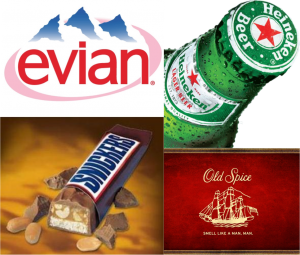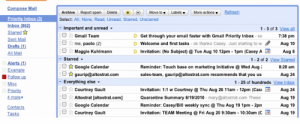In my last blog entry I was talking about the evolution of email accounts and the convenience of the Priority Inbox for users and the opportunities for marketers. In order to better explain how this works, I added a link to an Gmail-video. After realizing how much impact that video had on me and how I could picture myself coming home from a smartphone-free weekend not having to wear my suit of armour while checking my emails, I thought about the tremendous emotional influence videos can have – especially the ones that are recommended by friends. “The use of video as the central organizing element for social interaction and storytelling online“ is referred to as ‘Social Video’ Marketing (Definition by Advertising Age in 2009).
According to a recently conducted study by Decipher Research, viewers are far more likely to recall a brand name and engage with an ad’s message if a branded video has been recommended to them by a peer. This made me think of the most striking advertisments I remember – have a look and tell me what you think about them and if you have enjoyed them watching as much as I did.
and my all-time favourite Heineken Fridge
Apart from the fact that I think that they are hilarious, they have three more things in common. Although those videos are the ones that come to my mind whenever I think about successful advertising, I have never ever seen one of them on television but they were all – without exception – recommended by friends or posted on their walls on various social networks. Exactly this phenomenon was proven by the survey. Social video recommendations have a direct impact on traditional brand metrics and ad enjoyment.
Here are some striking results:
- Brand recall and brand association rose 7 percent among viewers who had peers recommend the videos versus viewers who found it by browsing
- 73 percent of respondents who viewed a peer-recommended video recalled the brand when prompted versus 68 percent of viewers who had browsed to the video directly;
- People who enjoyed a video were 97 percent more likely to purchase the product featured in the video.

